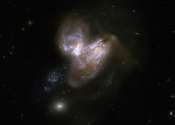NASA to fly six scientific balloons from New Mexico
NASA's Scientific Balloon Program is moving full-steam ahead into the fall 2022 campaign with six scientific, engineering, and student balloon flights supporting 17 missions. The flights are scheduled to launch from Fort ...









